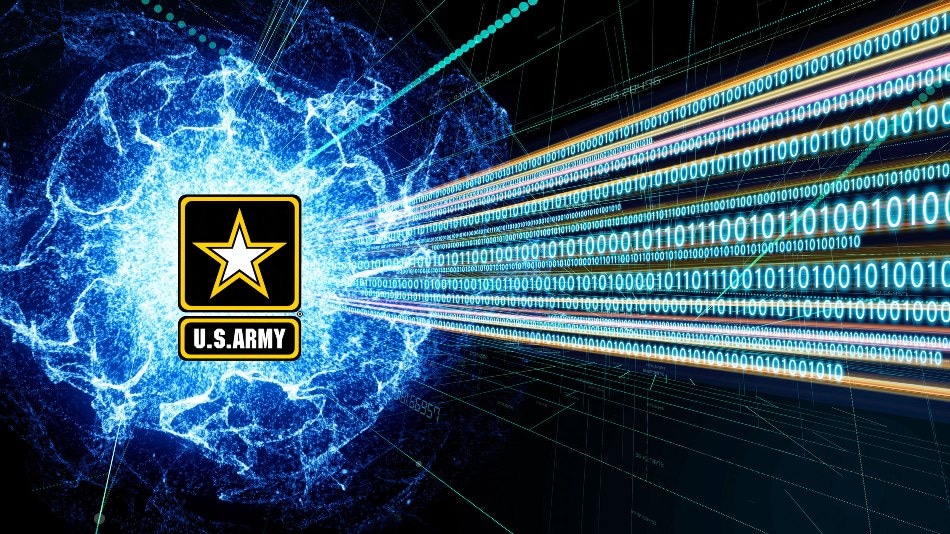Jul 25 2019
Army researchers have achieved a promising landmark in the area of quantum studies for enhanced capabilities in quantum computation and quantum simulation that offer the Soldier a strategic advantage in the combat zone.
 (Image credit: U.S. Army illustration Shutterstock)
(Image credit: U.S. Army illustration Shutterstock)
Dr Q. Sara Quraishi, physicist at the U.S. Army Combat Capabilities Development Command’s Army Research Laboratory, and her colleagues from the University of Waterloo, University of California, Berkeley, and the Lawrence Berkeley National Laboratory have been the first to put forward a numerical method to realize 2D physics in a trapped ion system. The method involves using a simplified laser control method to improve the usage of linear 1D ion chains for quantum information studies.
Trapped ions are excellent candidates for quantum simulation, computing and materials science studies because they have long-lived internal atomic states for quantum information storage and the high-fidelity ion-control has been demonstrated for us in quantum information.
Dr Q. Sara Quraishi, Physicist, Army Research Laboratory. U.S. Army Combat Capabilities Development Command
Quraishi continued, “However, except for a handful of exotic experimental setups, most ions are trapped in linear 1D chains, limiting their utility to study higher dimensional 2D or 3D physics such as quantum entanglement distribution, changes in phases of matter and long or short range interaction physics.”
Quraishi noted that the increasing size in the number of ions that scientists can trap, protocols for higher dimensions are timely and appealing. In order to fulfill this requirement, it is necessary for the scientists to stop interactions between specific ions in the one-dimensional chain.
“The ions are physically positioned in a 1D chain and order themselves with roughly equal spacing, very similar to a 1D chain of magnetic balls suspended by strings,” stated Quraishi. “Devising methods to turn on and off interactions between the ions is not easy because they all interact with each other, just like the suspended magnets.”
In the case of ions, some ion-ion interactions are stopped through cautious use of laser fields, as explained in the team’s study titled “Dynamical Hamiltonian engineering of 2D rectangular lattices in a one-dimensional ion chain,” such that, consequently, the ions just have interactions that would only occur in a 2D rectangular lattice.
This protocol is significant because it is considerably simpler than competing methods, which require individual qubit control. These results allow for a tractable way to study higher dimension material science in a carefully controlled manner. Better understanding of the fundamental properties of matter can help us engineer devices for enhanced performance and increased capability in applications like sensing and material resiliency.
Dr Q. Sara Quraishi, Physicist, Army Research Laboratory. U.S. Army Combat Capabilities Development Command
This study supports the Command, Control, Communications, Intelligence Cross-Functional Team, as it opens new paths for computing and communication.
In other words, quantum entanglement exhibits the capability for extensive data storage and processing, secure communications, and quantum, but not classically limited, sensing and navigation.
According to Quraishi, a significant aspect of this study is that even for increasing the size of ions (more than 10 ions), the outcomes scale favorably with experimental resources. Yet, a very important initial step is the demonstration of this protocol for at least four ions.
“ARL’s custom fabricate trap can readily trap such a chain of ions,” stated Quraishi. “In the future, the plan is to apply this hybrid scheme that combines local and global control of the ions to engineer higher-dimensional physics from our linear chain of four ions.”
This joint effort is monitored by the Army’s International Technology Center, which integrated academic-based studies and Army Mission aims in quantum science.
The research topic and approach were based on ideas jointly developed through the Army’s interactions with our collaborators. By combining expertise from multiple disciplines, we were able to develop an approach to overcome the hurdle of numerically generating higher-dimensional systems given an experimentally tractable 1D ion trapping configuration.
Dr Q. Sara Quraishi, Physicist, Army Research Laboratory. U.S. Army Combat Capabilities Development Command
Quraishi noted that the future prospects are promising with respect to the capability of this research in the quantum community, and also how it could empower the Army of the future.